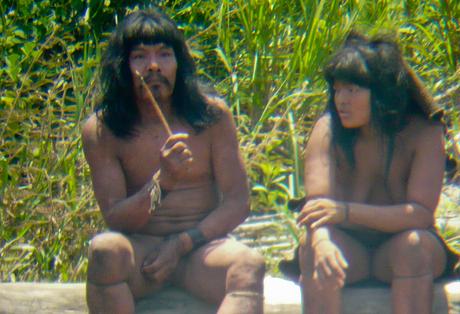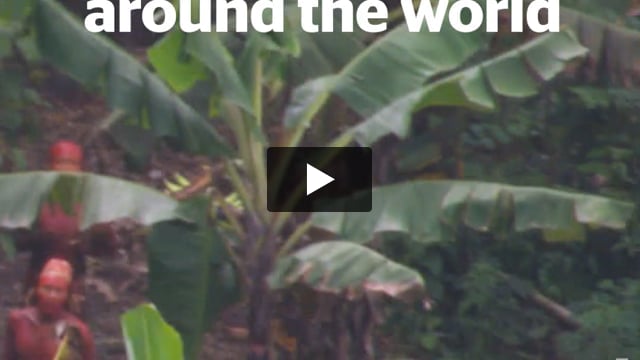Uncontacted Indians flee as loggers invade
February 24, 2006
This page was last updated in 2006 and may contain language which is now outdated.
| Loggers operating illegally in the Purús National Park in Peru are causing large numbers of uncontacted Indians to flee from their traditional territory. The nomadic Piro Indians have been forced across the border into Brazil, bringing them into conflict with other isolated Indians whose territory they are now occupying. | |
| Officials from FUNAI, Brazil's department of Indian affairs, report seeing signs of large-scale logging operations such as sawn planks of wood marked by Peruvian companies and oil drums, floating down the Envira River. | Mahogany illegally cut inside the Purús National Park in Peru has floated down the Envira river into Brazil. |
| They are now extremely concerned that the Piro may contract diseases to which they have no resistance due to their isolation, and that they are likely to invade the lands of tribes in Brazil, which could lead to serious conflict as the groups compete for resources. During the last four years, officials from FUNAI have noted increasing signs of the presence of uncontacted Piro Indians in Acre state on the border with Peru. FUNAI's camp on the Envira river near the border was encircled for several days by Piro in 1998, and in 2000 Indians came into the camp when it was empty and took food, cooking utensils and tools. The Piro clearly wish to be left alone – one fired an arrow at José Carlos Meirelles, head of FUNAI's post on the Upper Envira river, several years ago. FUNAI has found 60 tapiris or shelters built by the Piro Indians and large quantities of peccary heads and tortoise shells lying around, and estimates the Indians could number up to 300 people. They believe they are nomadic as there is no evidence of large malocas or communal houses, and from the location of the shelters, it is clear the Indians have to move around a large area to satisfy their hunting needs. Although several areas have been protected in south-eastern Peru as National Parks or Territorial Reserves for the many groups of isolated Indians living there, they are not adequately protected, and are being continually invaded by logging companies operating illegally. José Meirelles, who is currently acting head of FUNAI's uncontacted Indians unit and has lived in the area for 18 years, warns that the logging operations in Peru are not small scale' and fears conflict will soon erupt. As soon as the Piro begin to move into the lands of Indigenous peoples in Brazil, there will be a territorial dispute, and there will be war. People will end up killing each other. Only the vultures will find the corpses.' According to him what was once an untouched sanctuary and refuge for uncontacted peoples' is now being destroyed with alarming speed. The three uncontacted Indian groups on the Brazilian side of the border are not nomadic and live in large malocas and plant crops in gardens. Three areas have been recognised as belonging to them. They too have suffered from periodic invasion of their land by settlers, who in June 2000 shot at a group of uncontacted Indians in the Alto Tarauaca river, killing one of them. |



